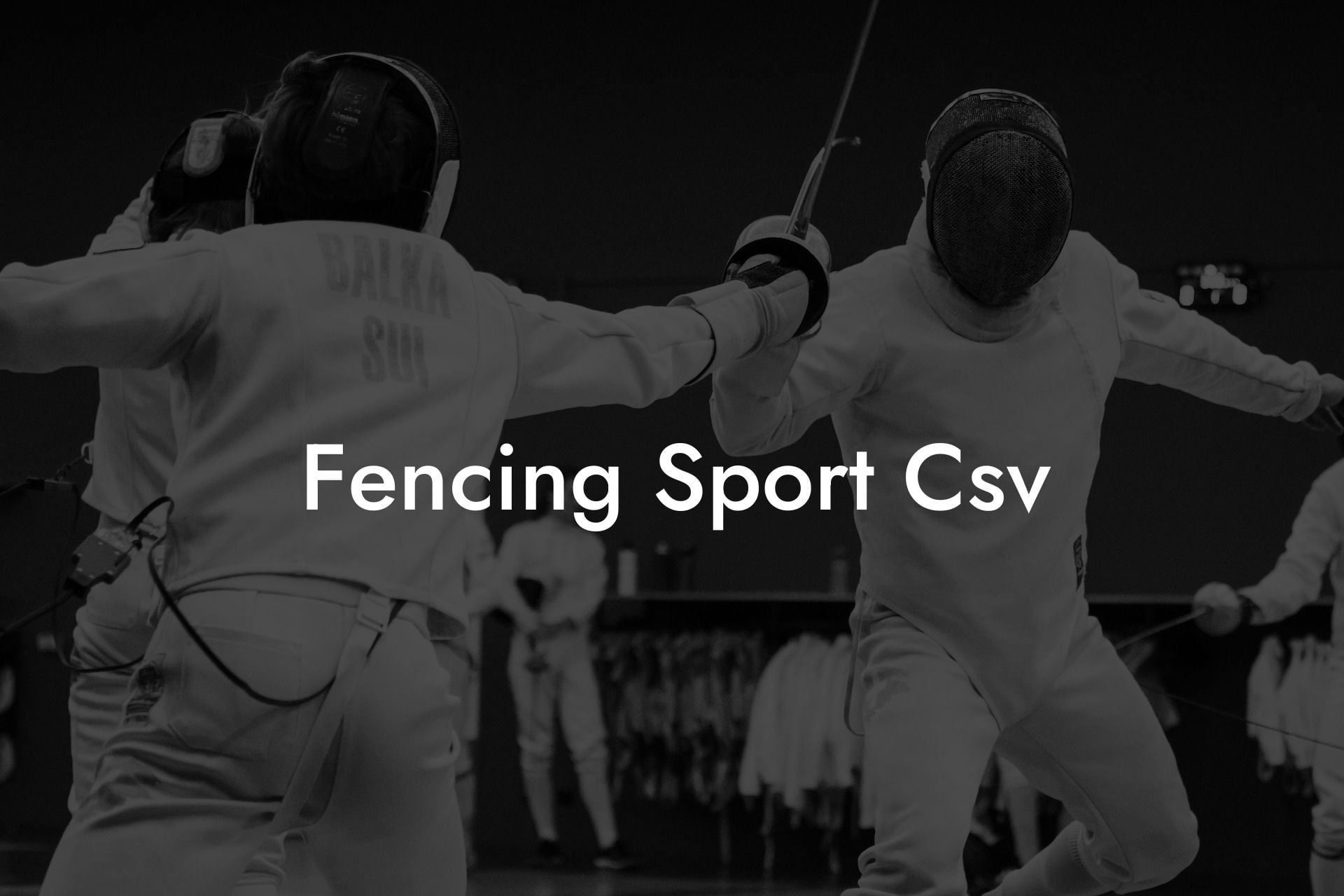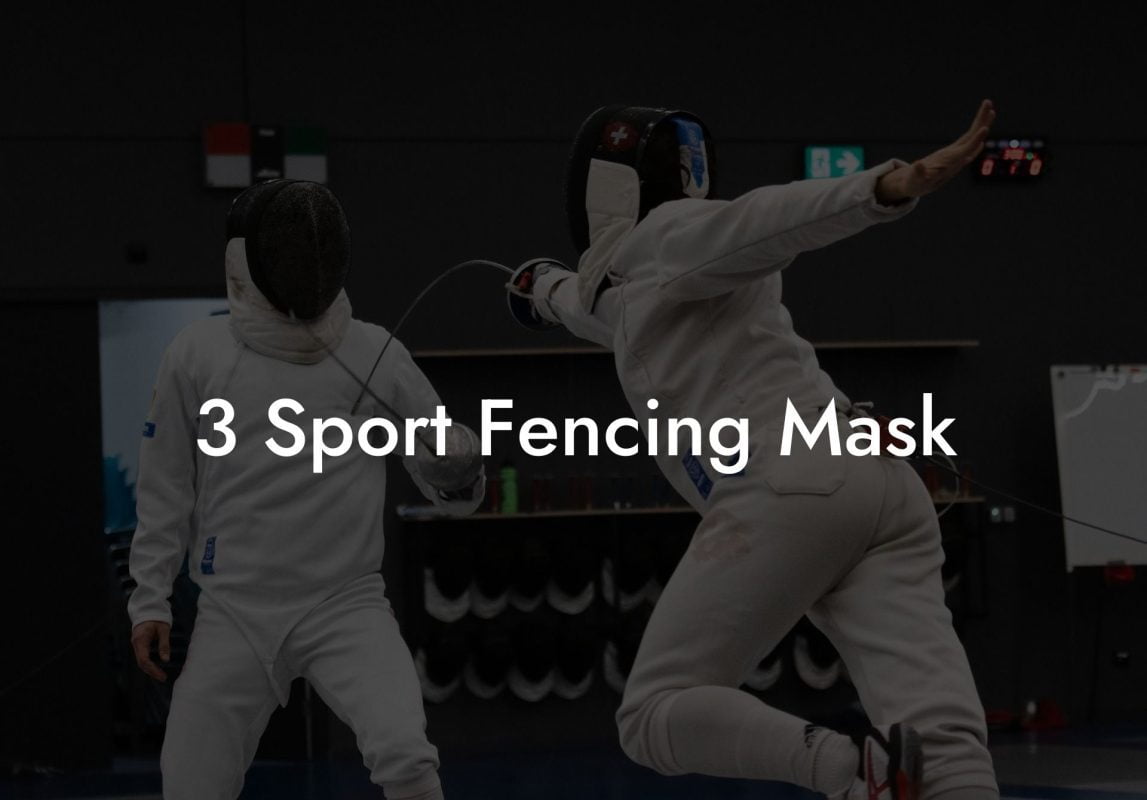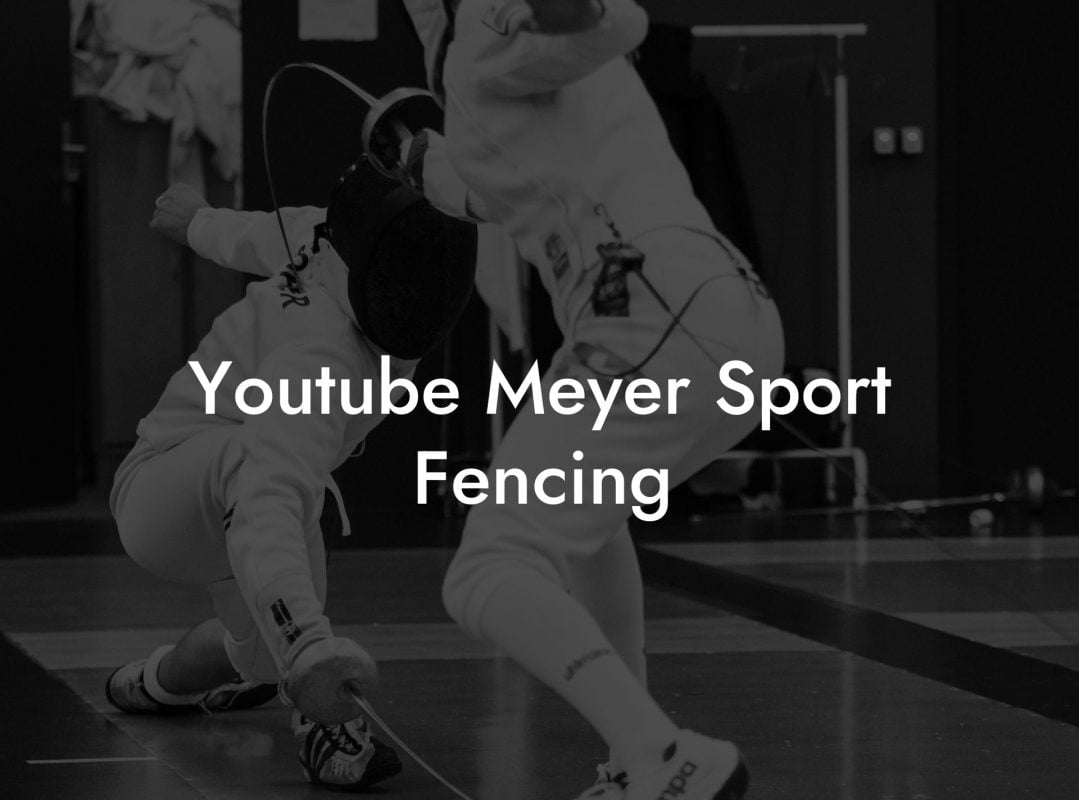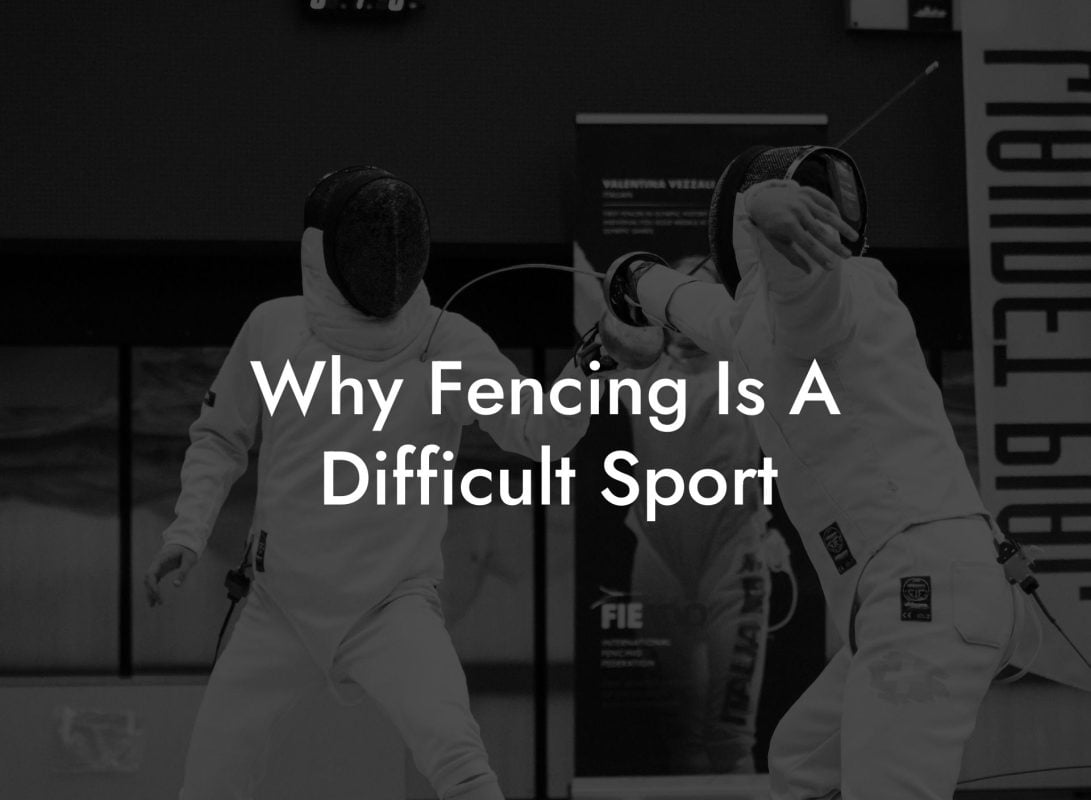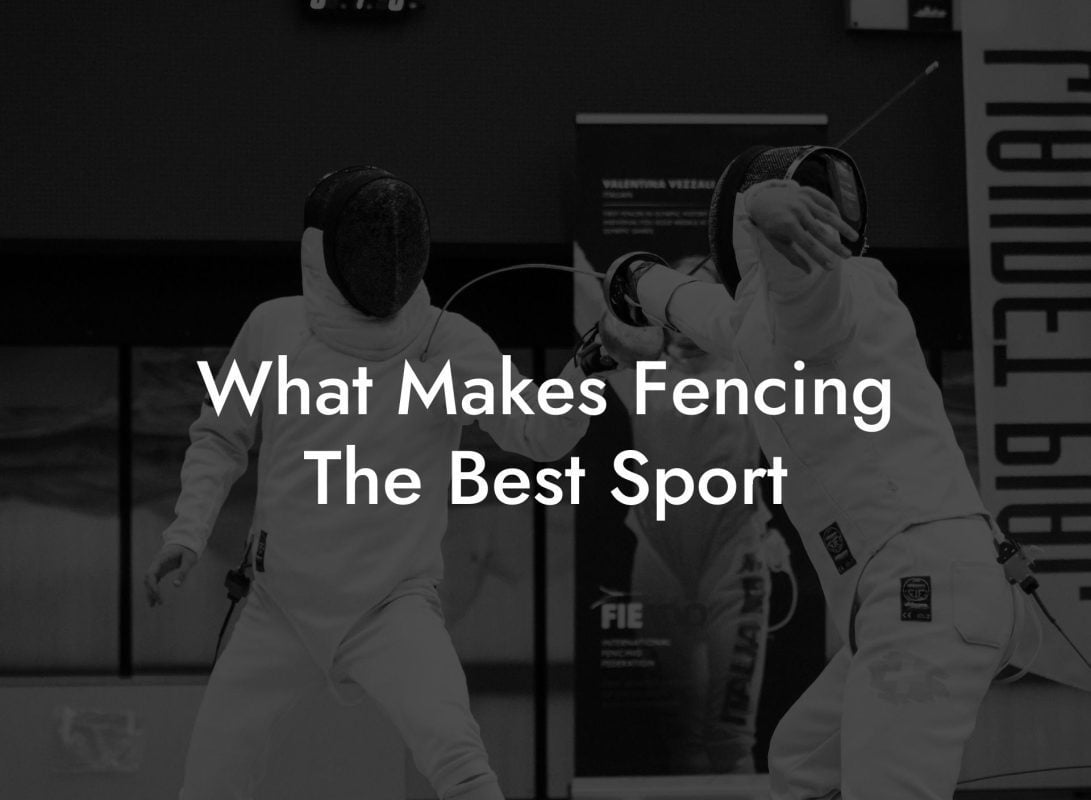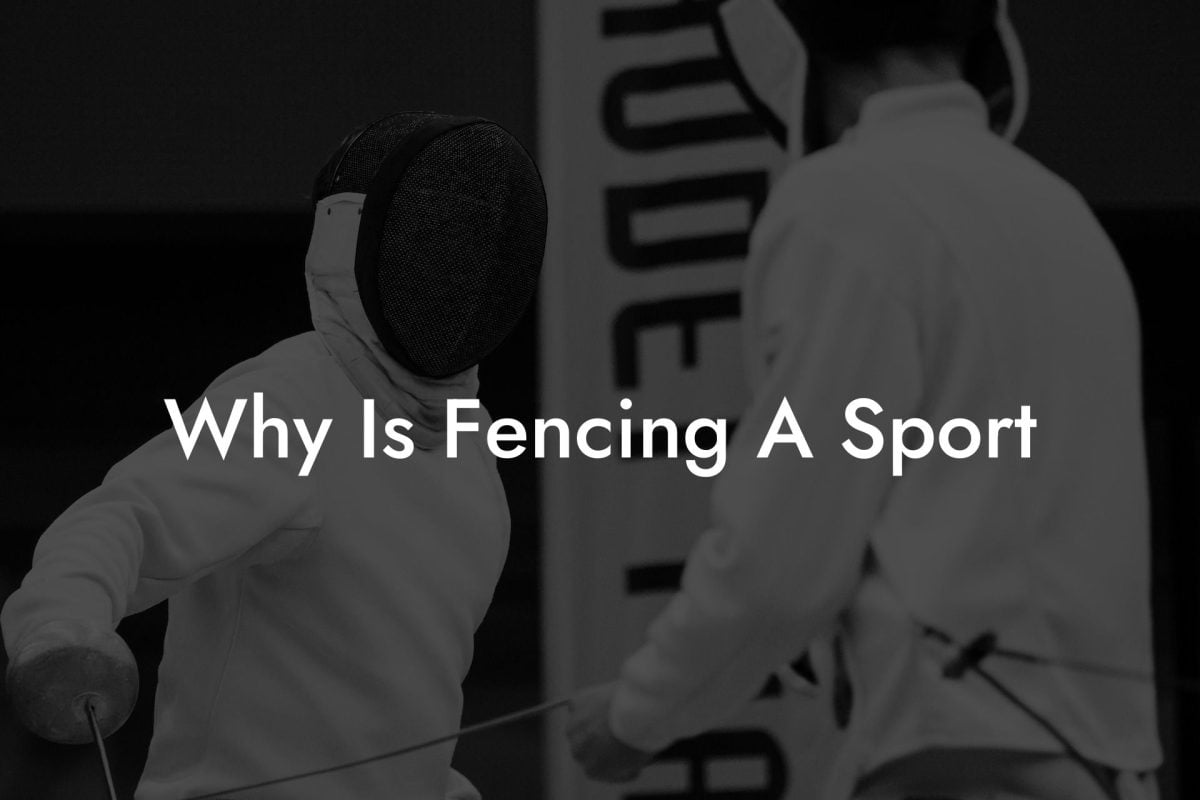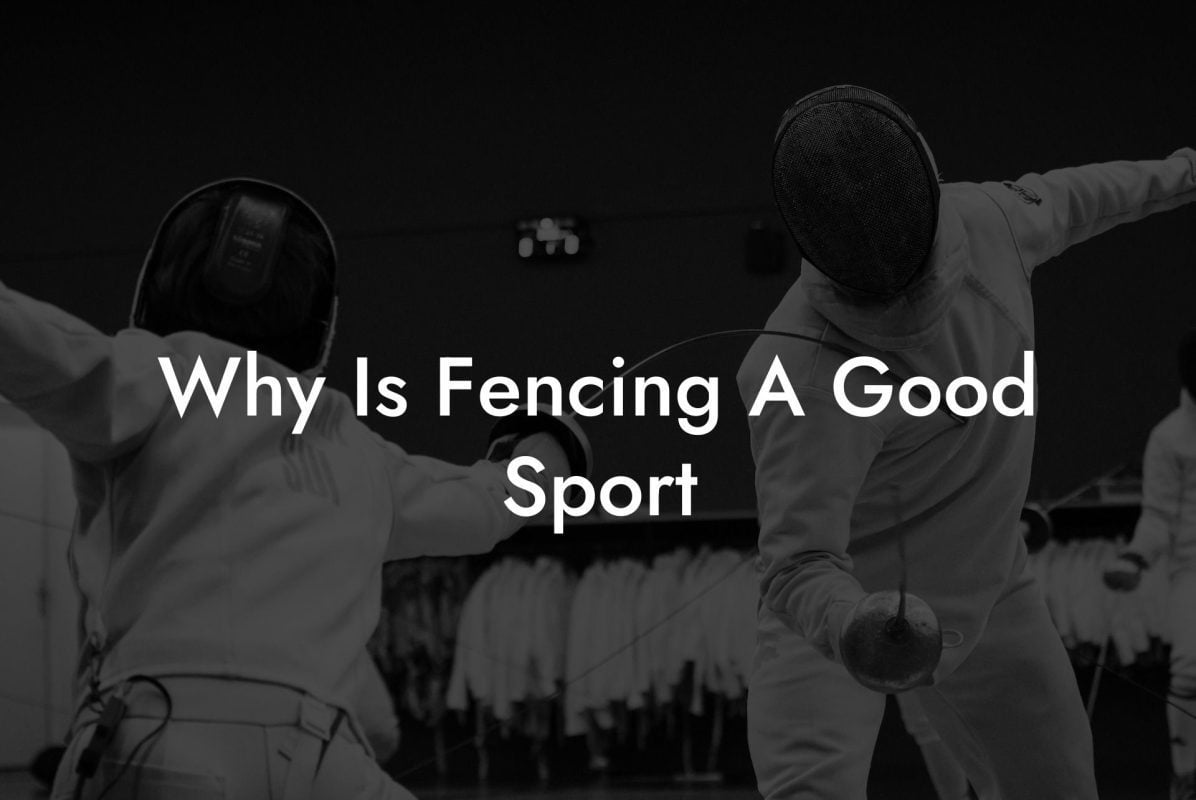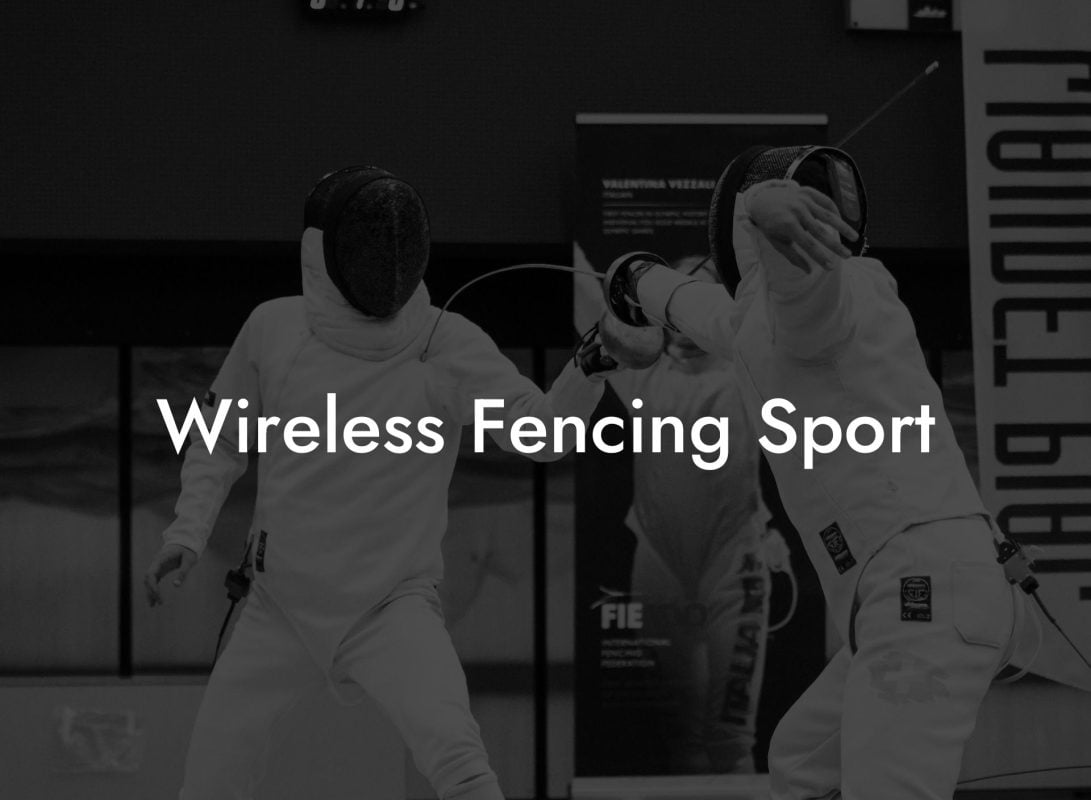Discover the elegance, excitement, and precision of the sport of fencing through an in-depth analysis of various aspects and an easy-to-understand guide in Fencing Sport Csv format. Embark on a journey of learning the art of the sword, from techniques to equipment, and become an enthusiast of this fascinating sport.
What is Fencing?
Fencing is a sport that dates back to ancient civilizations and has evolved over the centuries into modern-day competition. It involves two opponents facing off in a duel, armed with swords and protected by specialized gear. The goal is to score points by making contact with your opponent's target area while avoiding being hit yourself. There are three different fencing disciplines: foil, epee, and sabre, each with its unique style and rules.
Foil Fencing
Foil fencing is the most popular of the three disciplines, and it is often the starting point for beginners. The foil is a light, flexible weapon with a small, circular guard to protect the hand. Points are scored by hitting the opponent's torso (excluding arms and legs) with the tip of the foil. In this discipline, only thrusts are allowed, and priority is given to the fencer who initiates the attack.
Epee Fencing
Epee fencing is similar to foil, but with important differences. The epee is a heavier weapon, with a larger guard, and points can be scored on any part of the opponent's body. There is no priority rule in epee fencing – whoever hits first or with more force earns the point. This discipline requires patience and precision, as fencers must time their attacks carefully to score efficiently.
Sabre Fencing
Sabre fencing is the most aggressive and fast-paced of the three disciplines. The sabre is a light weapon with a curved blade and a guard that covers the knuckles. Points can be scored with both the tip and the edge of the weapon, allowing for slashing and thrusting attacks. Unlike foil and epee, the target area in sabre fencing includes the opponent's entire upper body, from the waist up. The priority rule is also applied in sabre, but it is more complex due to the variety of possible attacks.
Fencing Equipment
Safety is the primary concern in fencing, and as such, the sport requires specialized equipment to ensure the safety of both fencers:
- Fencing Mask: A heavy-duty mask that protects the face and neck from potential injury.
- Plastron: A chest and shoulder guard worn underneath the jacket for added protection.
- Fencing Jacket: Designed to protect the torso and arms while allowing for ample mobility.
- Fencing Glove: Specially made to protect the sword hand from accidental hits.
- Fencing Pants: Durable trousers made to offer protection for the lower body.
- Fencing Shoes: Specialized shoes designed for quick movements and non-slip grip on the fencing strip.
Fencing Techniques and Tactics
Fencing is not just about physical skill, but also tactical awareness and mental strength. Effective fencers learn to read their opponents' movements, predict their strategies, and execute their attacks accordingly. Some fundamental techniques to know include:
- Lunge: A lunging attack that covers distance quickly while maintaining good balance.
- Parry: A defensive move in which the fencer deflects the opponent's blade to protect themselves.
- Riposte: A counterattack following a successful parry.
- Feint: A deceptive move that tricks the opponent into reacting, opening up an opportunity for a real attack.
Fencing Sport Csv Example:
Imagine you are watching a foil fencing bout between two fencers, Fencer A and Fencer B. Fencer A initiates an attack with a lunge, aiming for Fencer B's torso. Fencer B executes a well-timed parry, deflecting Fencer A's blade and immediately follows up with a riposte, scoring a point. Both fencers quickly retreat, regrouping and preparing for the next exchange.
Fencing is a sport rich in history, technique, and excitement, offering a unique experience for both participants and spectators. By understanding its intricacies and engaging in its competitive spirit, you can join the ranks of its passionate enthusiasts. Don't hesitate to share this article with your fellow fencing aficionados and head over to Anchorage Fencing Club's blog to explore other in-depth guides into the realm of the swords.

